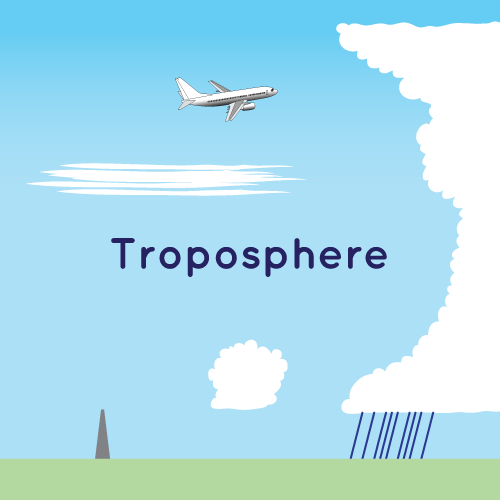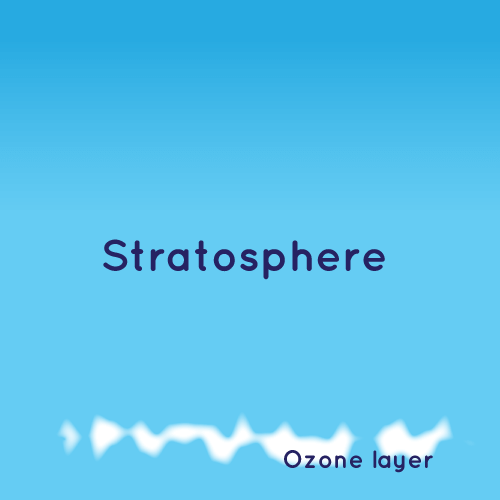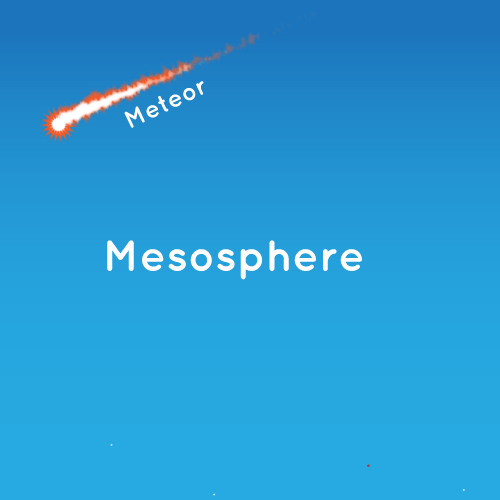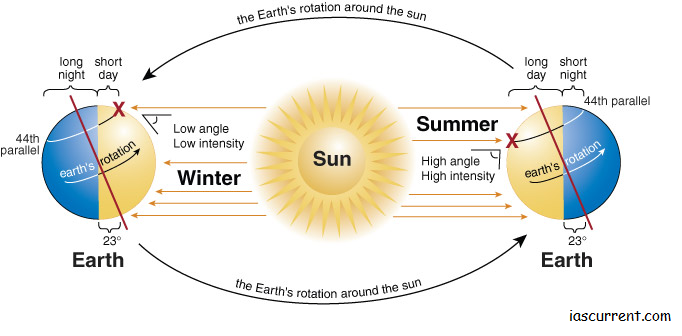Climatology is a branch of the study which examines the atmosphere and weather over time. In this section, we will study the composition and structure of the atmosphere.
Composition & Structure of the Atmosphere
The atmosphere is the gaseous sphere earthbound to earth by gravity. Gases vapor and suspended particles are physically mixed in the atmosphere. N2 O2Ar CO2 is uniformly mixed. Other particles change from place to place showing spatial (phase) and temporal (time) variation.
Heating of Earth’s Atmosphere

As altitude increases, the upper atmosphere gets farther and farther from the terrestrial radiation (radiation at the earth’s surface) thereby showing a decrease in temperature with altitude.
Structure of Earth’s Atmosphere
The structure of the earth’s atmosphere has been defined in terms of the vertical arrangement of atmosphere layers in terms of their thermal properties. These are divided into two categories.

Troposphere: Upper layer of the atmosphere

Here the temperature decreases with altitude at 2.5 Celcius/km (environmental or normal lapse rate). The thickness of the troposphere is 18 km at the equator and 8 km at the poles, because of the earth’s tilt from 23.5o North and 23.5o South. All-weather changes take place in this layer. Due to the characteristic vertical movement of air in this layer. The troposphere is not preferred by aviation for flying. The troposphere means a zone of mixing where the mixing of air happens by convection.

Tropopause
This is a transitional layer where the thermal properties of the troposphere and stratosphere cancel out. Consequently, the tropopause is a region (layer) showing constant temperature.
Stratosphere: Region of Conventional Movement of Air

This layer extends from 20km – 50 km. The stratosphere is a region of conventional movement of air. It is here that the westerly fit streams are observed. Aviators hence prefer the stratosphere for flying. The ozone layer is present in the stratosphere which absorbs the UV radiation of the sun. As a consequence, the temperature of the stratosphere increases with altitude.
Stratopause: A thin layer with a constant temperature.
Mesosphere: Burning of Meteoroids

Meteors become meteoroid/meteorites that start burning in this layer due to friction. The temperature of this layer decrease with altitude.
Mesopause: A thin transitional layer with a constant temperature.
Ionosphere: Free electrons for icons
The ionosphere is a layer having a huge concentration of free electrons for ions. These enable propagation and radio wave communication .here the temperature increase with altitude.
Note:
- The average thickness of the troposphere is 15km
- It is a zone of mixing.
- Temperature declines at 6.5o c/ km which are also called normal lapse at or environmental lapse rate.
- The stratosphere has atmosphere stability because of temperature invasion. Due to this, cold air lies below hot and light air. As a consequence, convection is not possible. Therefore there is no vertical movement of air hence the atmosphere stability.


